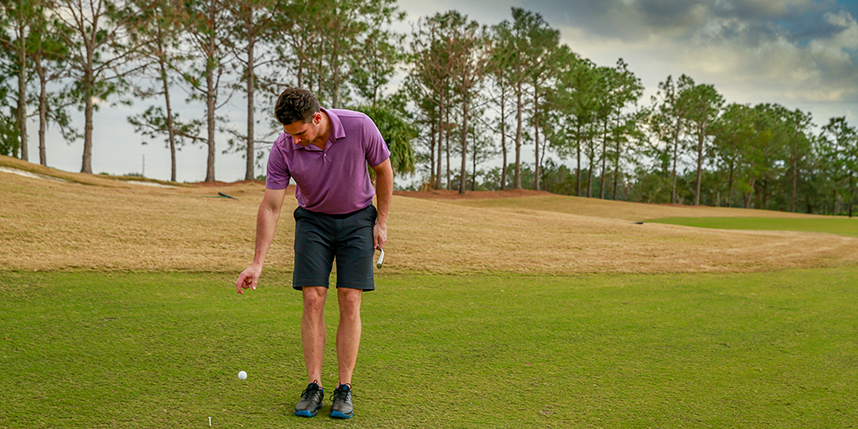Rule of the Month: Dropping
July 1, 2021 / by Jerry Stewart

Topic Overview:
When taking relief, whether with penalty or without, you must drop a ball. The ball must be dropped straight down from knee height, must be dropped by you (or your partner), must first strike the ground within your relief area, and must remain within that relief area. Your caddie is not allowed to drop your ball.
The relief area is always measured from a reference point. The reference point for an unplayable ball is simply the spot where the ball lies. For a ball in a penalty area, it is the spot where the ball crossed the edge of the penalty area. When taking relief from things like temporary water, ground under repair, cart paths, and sprinkler heads (abnormal course conditions), the reference point is called the nearest point of complete relief. This is the spot on the course nearest to where your ball lies, but not nearer the hole, where you could play your next stroke with no interference from the condition you’re taking relief from. Click here for more information on the nearest point of complete relief.
The size of the relief area is measured from the reference point and is determined by the type of relief you are taking (one club-length for things like cart paths and ground under repair, or two club-lengths for lateral relief for an unplayable ball or a ball in a red penalty area). If the ball doesn’t stay in the relief area after dropping it, simply drop it again. If it again doesn’t stay in the relief area, place a ball on the spot where it struck the ground on the second drop.
When taking relief, a club-length is always the length of the longest club in your bag (excluding your putter). For most players, this will be their driver. You may leave the headcover on when measuring, but the extra length doesn’t count – the club-length is still simply the length of the driver itself.
FAQs:
- My ball won’t stay in the area I need to drop it in – can I place it?
- How do I drop a ball?
- When do I need to drop again?
- Can my caddie drop or replace my ball?
- Can my partner drop or replace my ball?
- What if I drop instead of replace or replace instead of drop?
- Can I measure the relief area for my drop with a headcover on?
- How do I find the nearest point of complete relief and when is it used?